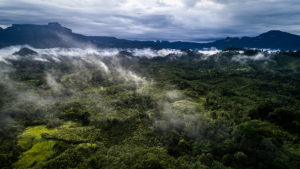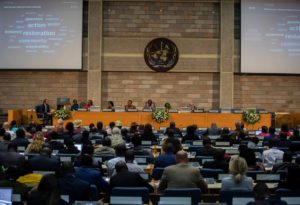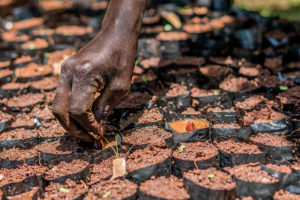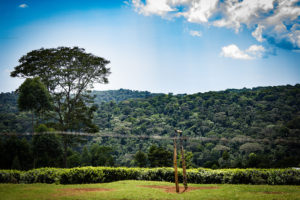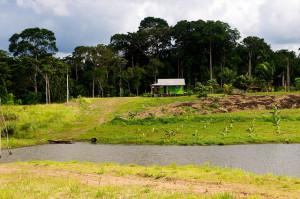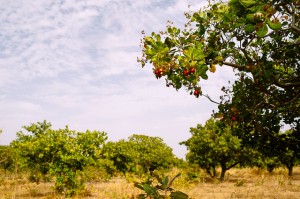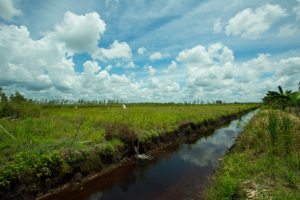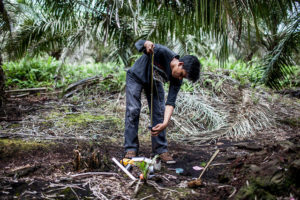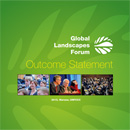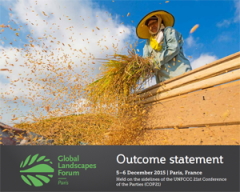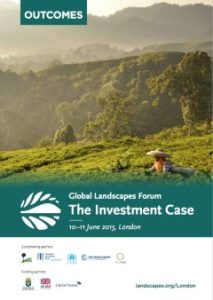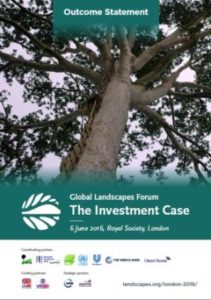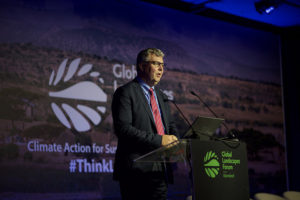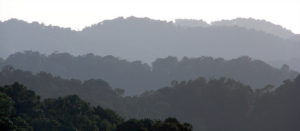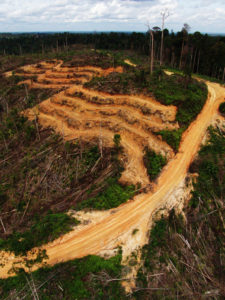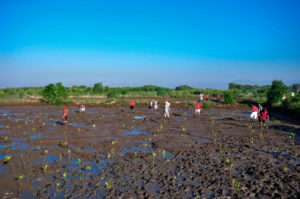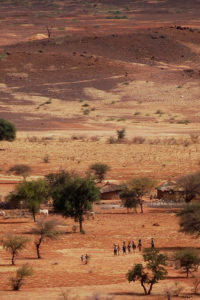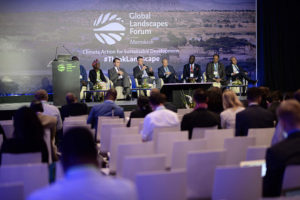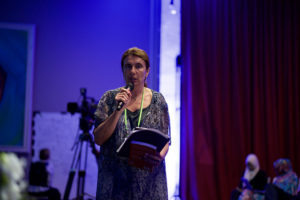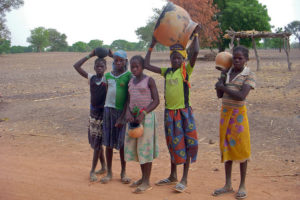Landscape restoration will not be fully effective unless it contributes to social as well as ecological benefits.
Recent discussions at the Global Landscapes Forum in Accra, Ghana, which revolved around tenure policy and forest landscape restoration in Madagascar, shed light on some of the issues impeding progress toward achieving positive social and ecological restoration outcomes globally.
The Bonn Challenge and the U.N. Decades on Ecosystem Restoration and Family Farming are important global restoration initiatives. They are designed, organized and funded by U.N. agencies, major donor countries, international non-governmental organizations (NGOs) and participating national governments that have signed on to their ambitious goals for restoring degraded forests, farmland and ecosystems.
Within the framework of the Bonn Challenge, 28 African countries affiliated in the AFR100 (African Forest Restoration Initiative) network are committed to restoring 113 million hectares of degraded forests.
There is wide agreement among experts that communities must be consulted at every stage of the restoration planning and implementation processes.
But too often “consultation” takes the form of perfunctory discussions with communities, and meaningful decisions about land use practices, funding, program design, local governance, incentives, regulation, planned outcomes and distribution of benefits are made by external entities.
In reality, communities lack any real negotiating power, including the ability to reject proposals they consider unrealistic or not in their best interests. This lack of community authority has significant consequences.

Manony Andriampiolazana, on left, interviews a leader in Ankijabe, Boeny District, Madagascar, forest restoration priorities.
Community members actively shape landscapes through decisions about how and where land is used for forests, agriculture, housing and other uses. As such, the outcomes of restoration efforts, positive or negative, are largely in their hands. While government and NGO planners may recommend or even prescribe adoption of new land use practices and technologies believed conducive to restoration and sustainable use, ultimately communities decide whether or not the recommended practices are practical and realistic.
Because they live and work close to the resource management problems, land users are in the best position to make informed choices about how land can be best managed and sustainably used for environmental, economic and social benefit. Research has found that practices imposed by outside authorities often lack technical credibility and rarely possess political legitimacy (McLain et al. 2018a).
This link between success in achieving positive outcomes and democratic decision-making is often overlooked in forest restoration programs. Reference to “consulting” local stakeholders doesn’t come close to describing the decision-making authority local people should exercise.
Governments can create incentives for restoration, but whether or not incentives are appropriate or sufficient to motivate new land use practices is largely a matter for users of land and forests to decide.
Governments can attempt to discourage destructive land use practices through direct regulation and penalties. But over-reliance on rule making and enforcement can prove unduly burdensome and coercive and turn communities away from a restoration agenda.
Lingering legacy
Colonial powers undercut or eliminated the ability of communities to make collective, democratic decisions about local land use by concentrating ownership rights over land, forests and pasture in the state.
While regulation carefully applied may have a role, communities should have the right to adopt restoration practices as a matter of free, collective choice, derived from secure rights to their local resources, including the right to decide how they are best managed.
CIFOR research found that tenure security motivates community investments in restoration (McLain et al. 2018b).
In much of Africa but also among indigenous communities in Latin America and Asia, customary tenure arrangements ensure access to land as a social right.
In other words, locally recognized systems of resource governance and rights are in place, but these systems too often are not recognized in statute or national law.
Madagascar, which aims to restore 4 million hectares of degraded forest by 2030, and other African governments, seek to “modernize” the property rights system by linking delivery of land rights to statutory instruments, such as title and certification.
Local people who believe that their customary rights are legitimate and secure may sometimes be vulnerable to loss of those rights because customary tenure arrangements are often not recognized under law.
Madagascar case study
Despite guidelines that Madagascar’s restoration plans reflect active engagement with communities and a variety of local stakeholders, research and experience suggests that Malagasy community-based land management institutions and practices are invisible to official authorities.
What is the evidence of this invisibility?
- Insufficient recognition of community organizations and community resource rights in law. Malagasy civil law recognizes in principle the right of communities to manage forests. However, the law does not describe or grant the powers necessary for communities to carry out their management responsibilities. In practice, community representatives are sometimes consulted by government officials on land use decisions, but community organizations lack sufficient autonomy to manage and enforce local land use initiatives.
- Failure of projects to systematically engage with legitimate local representatives. Local NGOs sometimes assert that they legally represent local communities, or hold and exercise rights on behalf of local communities, when communities would dispute that this is the case.
- A focus on individual property rights instruments, such as titling or certification, which are recognized in law, while most forests and landscapes targeted for restoration are used and managed collectively. Assignment of individual title to portions of areas historically used collectively further erodes collective rights.
- The administrative infrastructure and technical resources needed to assign title and other forms of statutory rights in rural areas are very limited. Poor people face additional barriers to securing title due to high survey and registration costs and limited knowledge of their rights and official procedures. Moreover, there is evidence that subsequent to the initial titling, right holders do not register transfer of rights due to sale or inheritance, largely because the level of tenure security provided under the customary system is perceived to be adequate or the costs of doing so are considered to be too high. (Ayalew et al. 2019; Lawry et al. 2017).
- Some individuals (often migrants) who have weak customary rights in places of new arrival may claim statutory title to land as a way of securing rights in ways not possible through the local customary system. This can undercut the ability of the community to make enforceable collective land use decisions.
- Lack of motivation for local people who have customary rights to seek land certificates or titles through the statutory system, because of the belief that their customary rights are secure.
Reshaping the terrain
In sum, the future of restoration may be limited if insufficient democracy and tenure insecurity are not addressed. Restoration practices that contribute to positive environmental and social outcomes are more likely to be taken up by local people when they have the degree of control over forests and trees necessary to reap the benefits of their investments.
It is imperative that the Bonn Challenge’s call for engagement with local communities in forest landscape restoration planning and implementation go beyond consultation and address the importance of community governance and secure community rights to land, forests and trees.

Restoring forests, restoring communities: How secure resource rights help communities in Africa restore forests and build local economies session panelists. From left: Chris Buss, IUCN forest programme; Patrick Ranjatson, ESSA-Foret, University of Antananarivo, Madagascar; Steven Lawry, representing the Center for International Forestry Research; Tangu Tumeo, Malawi Forest Department; and Priscilia Wainaina, World Agroforestry Center, Nairobi.
Community self-governance and legal recognition of resource rights are essential preconditions for community–led restoration. Self-governance is a precondition to negotiating consensus about use practices within communities and rights enable and catalyze action.
In the absence of rights there is no assurance that local communities will have the certainty that the benefits of their labors and investments will accrue to them.
Customary rights can be recognized statutorily, and several African countries have implemented legal reforms that recognize customary tenure (including Botswana, Kenya, Liberia and South Sudan). But Madagascar has not.
Until Madagascar and other countries take steps to design and implement laws that extend local self-governance and tenure security through, for instance, recognition of customary tenure, it is unlikely that landscape restoration at scale will occur.
By Steven Lawry and Patrick Ranjatson
This article draws on ideas discussed at the interactive session entitled “Restoring Forests, Restoring Communities,” held in Accra, Ghana, 29-30 October 2019, at the Global Landscapes Forum on Restoration in Africa. Steven Lawry, senior associate at the Center for International Forestry Research (CIFOR), organized and moderated the session. Patrick Ranjatson, professor at Mention Foresterie et Environnement de l’Ecole Supérieure des Sciences Agronomiques, Université d’Antananarivo (ESSA-Forêts) led a discussion on tenure policy and forest landscape restoration in Madagascar.
Funding from Gesellschaft für Internationale Zusammenarbeit GmbH (GIZ) and the CGIAR Research Programs on Policies, Institutions and Markets (PIM), led by the International Food Policy Research Institute (IFPRI) supported research in Madagascar in 2018-2019 on which this article was based. PIM and the CGIAR Research Program on Forests, Trees and Agroforestry (FTA), led by the Center for International Forestry Research (CIFOR) supported the Global Landscapes Forum interactive session where the research was presented. Opinions expressed are the authors’ alone.
References
Ayalew Ali D, Deininger K, Mahofa G, and Nyakulama R. 2019. Sustaining land registration benefits by addressing the challenges of reversion to informality in Rwanda. Land Use Policy. (In Press)
Baynes J, Herbohn J, Smith C, Fisher R and Bray D. 2015. Key factors which influence the success of community forestry in developing countries. Global Environmental Change Part A 35:226–38.
Lawry S, Samii C, Hall R, Leopold A, Hornby and Mtero F. 2017. The impact of land property rights interventions on investment and agricultural productivity in developing countries: a systematic review, Journal of Development Effectiveness, 9:1, 61-81,DOI: 10.1080/19439342.2016.1160947
McLain R, Lawry S, Ojanen, M. 2018a. Fisheries’ Property Regimes and Environmental Outcomes: A Realist Synthesis Review. World Development. https://www.sciencedirect.com/science/article/pii/S0305750X17303091?via%3Dihub
McLain R, Lawry S, Guariguata M, Reed J. 2018b. Toward a tenure-responsive approach to forest landscape restoration: A proposed tenure diagnostic for assessing restoration opportunities. Land Use Policy. https://doi.org/10.1016/j. landusepol.2018.11.053












